Have you ever sewn something and thought, ugh, kind of a disaster, I’ll probably never wear that? Well yes, of course you have, you’re a sewist, and that’s part of the deal, right? But have you ever then changed your mind and realized it’s not a disaster at all and it’s actually not only wearable but even pretty awesome? That’s what happened with me and this satin shell. I thought it was destined for the donation pile when I finished it, and it wasn’t until I took these pictures that I realized how wrong I was about that.
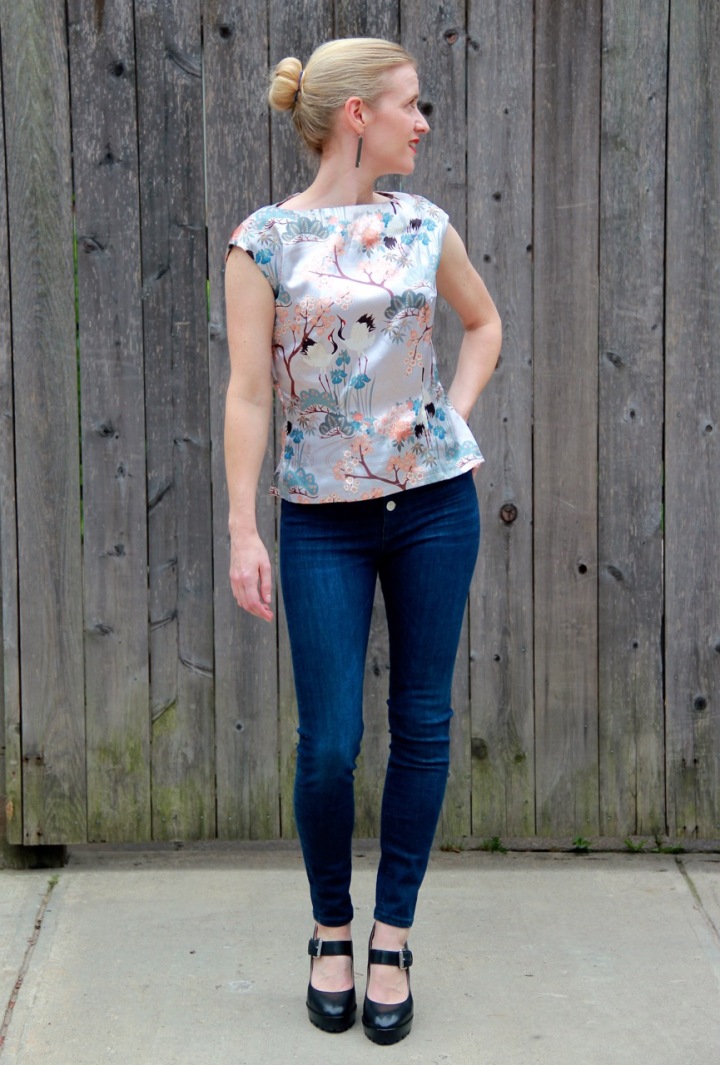
This is the Danmark top & dress pattern from How to do Fashion. You can get it for free when you sign up for Nanna’s email newsletter. Thanks, Nanna! It’s a simple top and, as with all of Nanna’s patterns, it has a vintage vibe. It has cut-on cap sleeves, a few darts, neck and sleeve facings, and no closures.
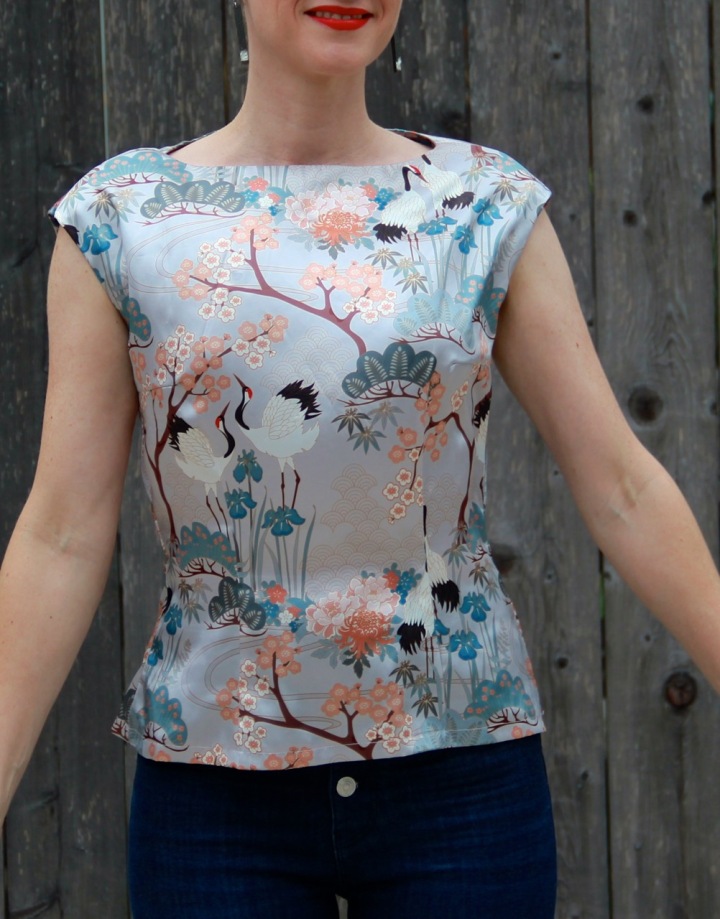
The fabric is custom-printed satin from Spoonflower (no affiliation). I am helpless against crane fabric. I want all the fabric with ALL THE CRANES! The design, called Japanese Garden Gray, is by Judit Gueth, a textile designer based here in Toronto. (Go check out Judit’s website — she designs amazing rugs, fabrics and wallpaper!) Isn’t this fabric perfect for the Danmark top? Or maybe I should say the Danmark pattern was perfect for the fabric, since the fabric is the showstopper here. It needed a very simple pattern with minimal design details — a blank canvas — and Danmark really fit the bill.
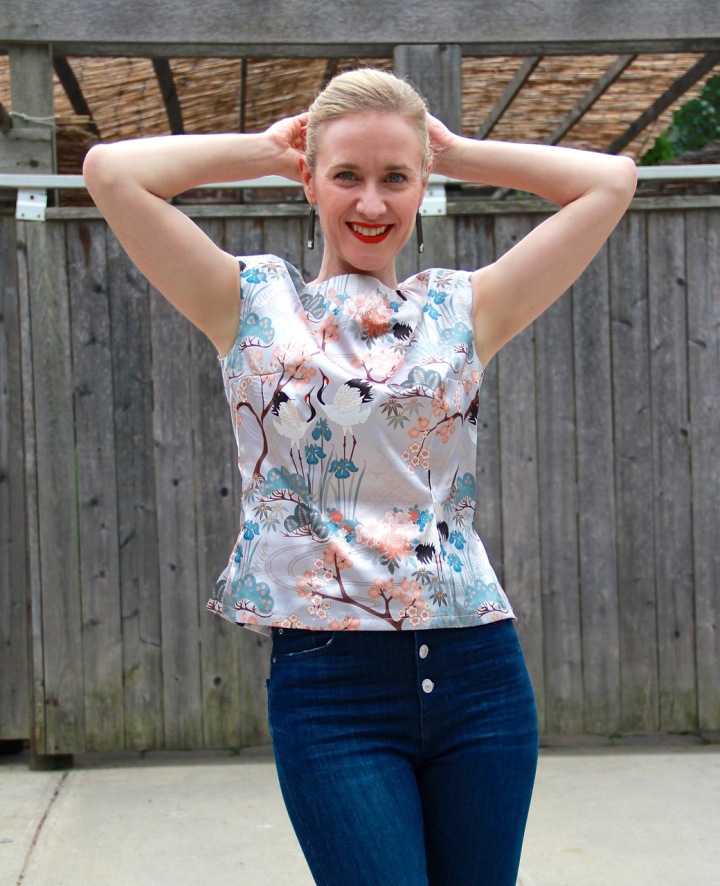
Contrary to my latest experience with Spoonflower, in which the cost of my custom-printed Inari Tee Dress pattern seemed to skyrocket with shipping and duties, this fabric was a very reasonable $18 US for 1 yard of satin, plus $2 US for shipping. I bought it back in March so I can’t actually remember if I had to pay duties when it arrived. (I mean, c’mon, I’m lucky if I can remember what I did yesterday.) In any case, between a free pattern download and about $25 CDN for the fabric, I’d consider this pretty cost-effective for a unique garment.
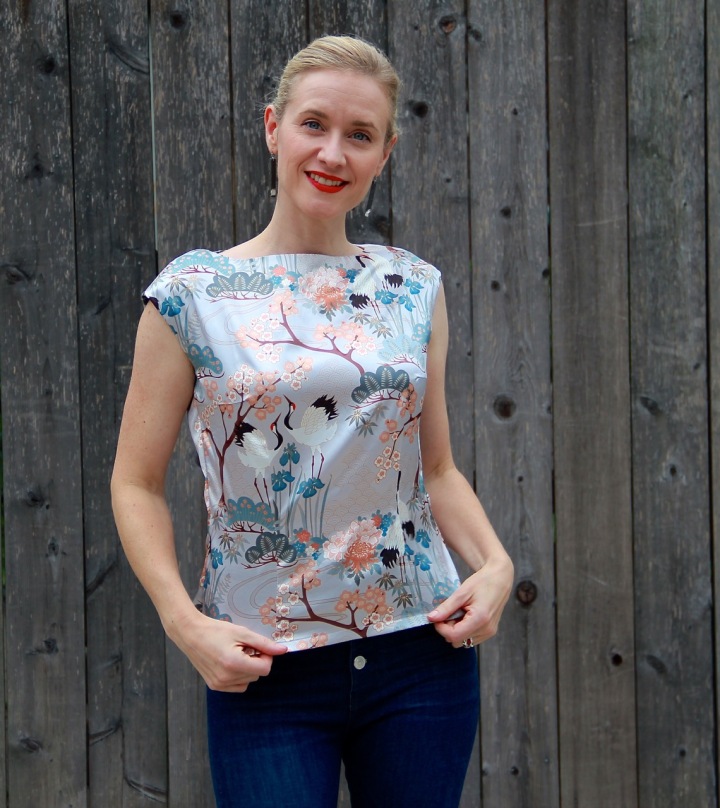
I think the reason I wasn’t sure I liked this top at first may be because, as I mentioned in my last post, I’m losing patience with wearing non-stretch wovens. I’m so used to wearing knits, with their ability to fit with little to no ease, that when I make something woven I always feel like it’s too big or it doesn’t fit quite right because there is some positive ease to it. But of course there is, there *has* to be positive ease to it, or I wouldn’t be able to move once I got it on! So I think I’ve made my peace with that, and I’m rolling with it.
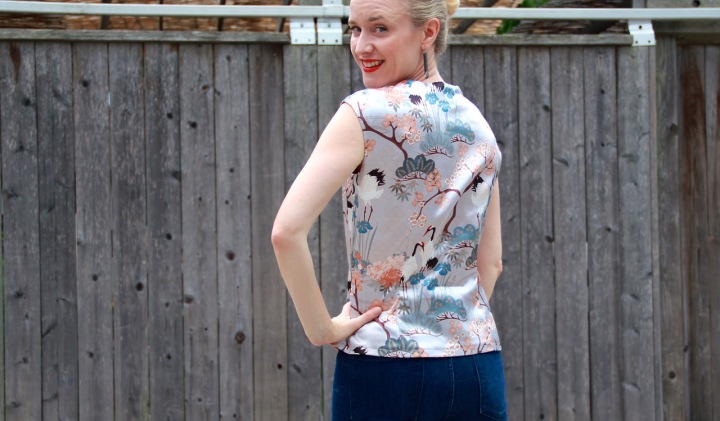
I’d read some horror stories about sewing with satin but it went fairly well for me, as it did when I made these satin joggers. (Yeah, satin joggers. That shouldn’t even be a phrase that exists in nature, right?) Maybe I just got lucky twice over with satin? If you’ve never sewed with satin and are thinking of trying, here are a couple of caveats and tips:
- Satin frays easily. You may want to finish the edges of your cut-out pieces before you do any other sewing. If you’re serging the edges, be sure to test on a scrap first, as I found my serger needed a lot of tension adjustments to work properly on this satin.
- You may even consider giving yourself wider seam allowances to work with. This Danmark top included just 1cm seam allowances and it was a little touch-and-go for me in spots where I hadn’t serged the edges before working with it.
- Satin also snags easily. You’ll notice right away if you have any rough edges on your fingernails as soon as you start handling the satin. Use fine, sharp pins, and file your nails!
- This is the one fabric in my experience so far for which it’s not only okay to pull it taught while running it through the sewing machine, you actually should! Stitches tend to bunch up on satin, so hold the fabric in front and behind the machine needle and keep it quite taught as you sew.
- Satin doesn’t press very well. I found it hard to get the seams to lie flat. I also found out after the fact that you shouldn’t use steam because you may leave water marks on the satin. Of course, before I read that I had been steaming the shit out of mine! Luckily this fabric didn’t have any issues with water marks.


Anyway, I have decided this is a super cute top. I’m so glad that Asian-inspired prints and garments like kimono tops are having a moment among fashion trends. I’m going to try to sew up the Sew Over It Kimono Jacket before this precious moment slips away! And then I’m going to keep wearing Asian-inspired prints and garments long after the trend has passed because I love them and I’ll wear whatever I please, thank you very much! 😀
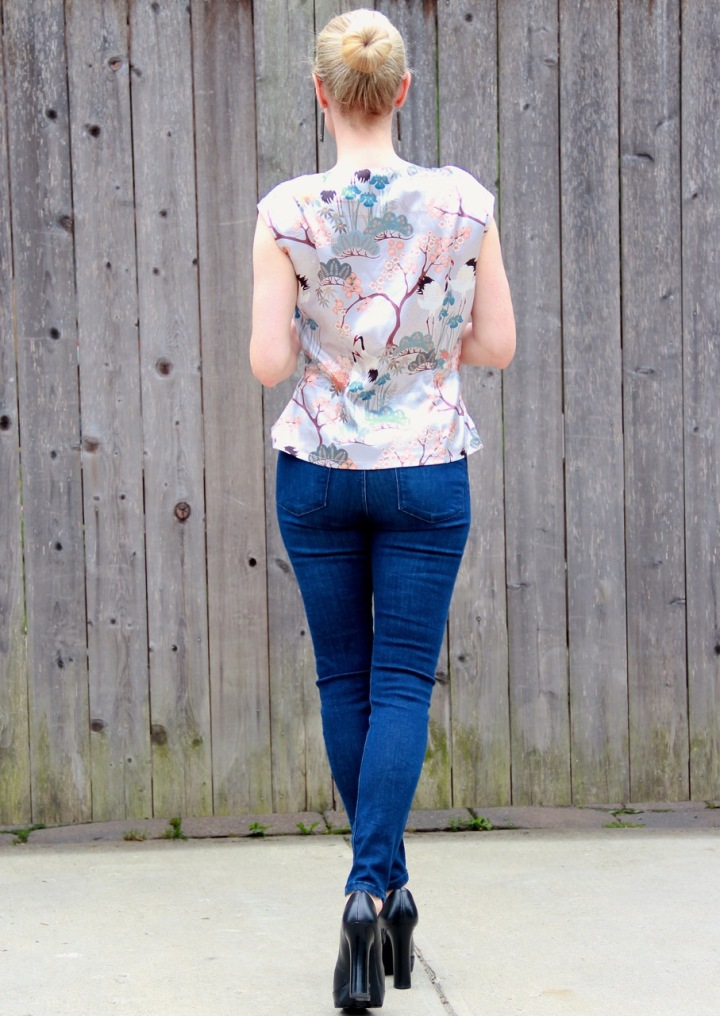
How about you? Have you ever sewn satin? Or have you ever had the same experience I did where you think you don’t like something you’ve made until you see pictures of it?
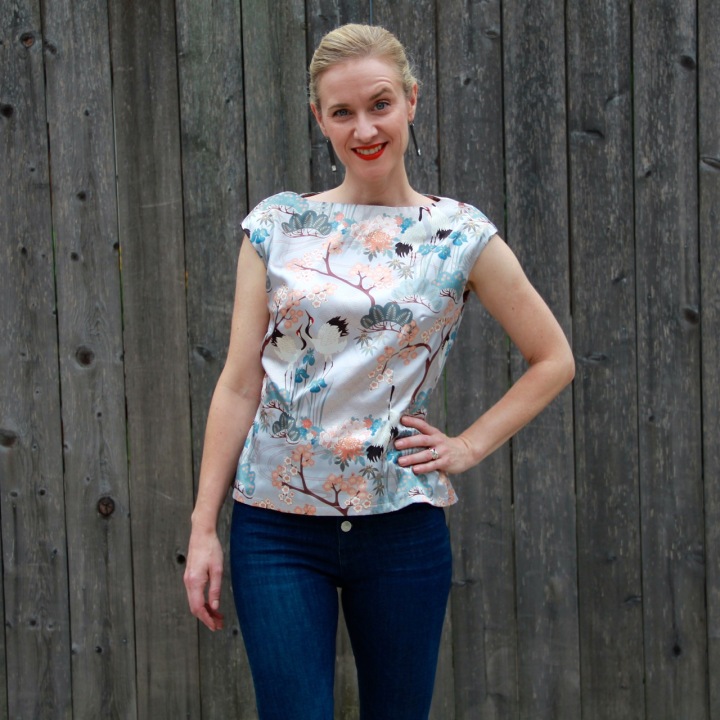
Thanks so much for stopping by!
— Lori


A perfect marriage of pattern and gorgeous fabric.
LikeLiked by 1 person
Thanks, Tammy!
LikeLike
I love the fabric choice. I agree that satin is tough to work with but you wrangled it well – looks fantastic.
LikeLiked by 1 person
Beautiful top! I think the fit is spot on – everything about the top suits you to a T 🙂
LikeLiked by 1 person
looks great in that beautiful fabric. I started a quilt with some crane fabrics in it – must get onto finishing that!
LikeLiked by 1 person
I really like this on you! Great make! And really beautiful photography too.
LikeLiked by 1 person
Thanks, Alex. I’ll pass your compliments on to my photographer, aka husband, aka #UnsungSewingBlogHero 😀
LikeLiked by 1 person
Omg..this is fabulous 😊
LikeLike